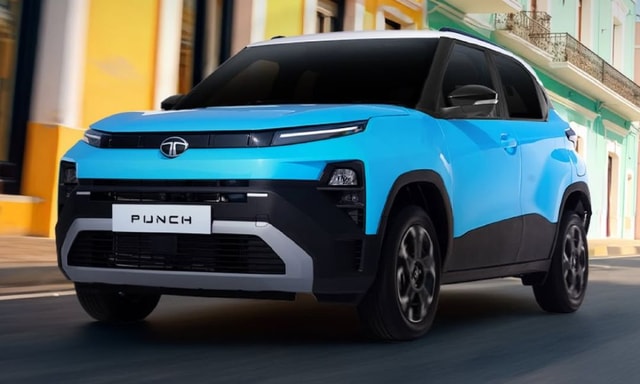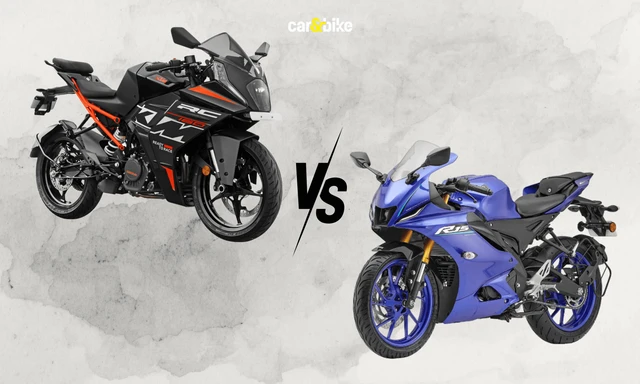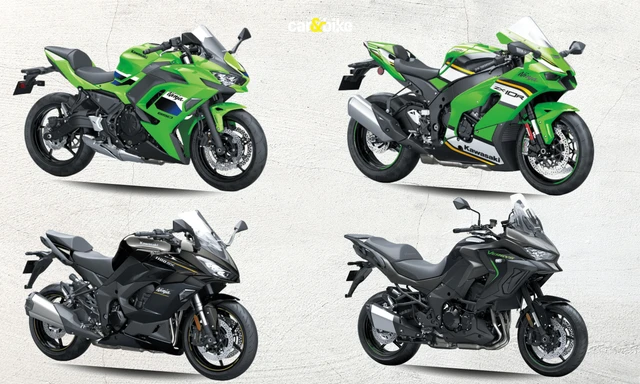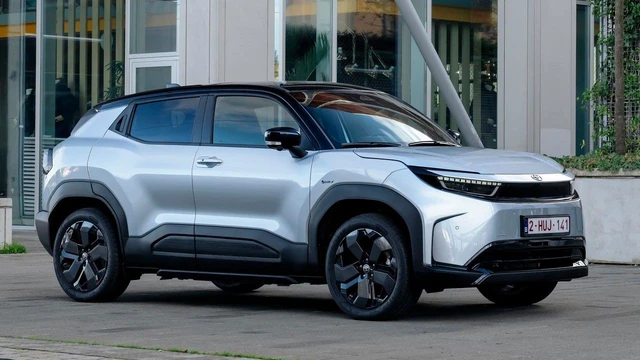Explained: The Functions Of All The Controls On The Modern F1 Steering Wheel

- F1 cars used to have generic steering wheels during the 1950s
- The steering wheels are now more electronic-centric
- The first buttons to be added to the wheel were the paddle shifters
For a conventional driver, all a steering wheel is made for is, as the name suggests, steering the car. However, this is not the same when it's about a Formula One car. In such cars, the steering wheel is used for a lot more things than to sound the horn or change the music for you. In addition to the primary function of changing the direction of the car, it lets you control almost everything there is to the F1 cars.When compared to a normal car's steering wheel, a Formula 1 car steering wheel looks somewhat like a math problem. Not only does it have a HUD display that displays some of the most vital information about the car, but with all those buttons and controls, using one without the right knowledge can be quite frustrating. Whether you are just curious or intrigued, here you will learn all you have to about it.

Why is an F1 steering shaped like that?
To begin with, you must have noticed the rectangular shape of the steering wheel. Well, this is not a gimmicky move. An F1 steering does not rotate any further than three-quarters of each turn; this makes it rather unnecessary to have the round shape. Along with that, there are two slots where the driver hold's the steering, and that's about all.
Buttons in the car
These are all of the buttons found in the latest F1 steering wheels (from left to right):
- Multi-down
- Neutral
- Start
- Differential control
- Fuel hatch
- Engine Stop
- Multi-function button (x2)
- RPM lights
- Start Preparation (x2)
- Speed Limit
- Radio
- Engine
- Screen scroll
- Bi-directional acknowledge

What do the buttons and knobs control?
Now that you have understood the reason for the shape of the steering wheel, it is time to understand the reason for so many knobs, buttons, displays and switches on it. The buttons allow the driver to control everything about the car, starting from brake force distribution to getting their energy drinks squirted in their mouth. A few of the other controls worth mentioning are the brake bias, engine mapping, radio, differential settings, traction control, hand clutch, rain light and a neutral button. The gear shifts, however, are placed behind the wheel, as there is no space in the cockpit.
However, this is and never will be the final layout of the steering wheel since these rules change every year. For instance, traction control, a button that prevents the wheels from spinning, got banned in 2008, and the button was hence removed.
How do the drivers know each control?
It is quite common to get overwhelmed with this for a common driver; however, for an F1 driver, all these controls are absolutely essential. It acts as an interface for the racer and the car, allowing them to make crucial adjustments to ensure a smooth and winning lap.
The drivers are trained for the same and know what each button or knob controls. They might even have to do it at high speeds. The easiest way to do this is to learn the placing of each button and memorize it.
Once they have memorized it and practised with a similar wheel, it is implemented in their muscle memory, and they do not have to search or even think about where the buttons are. They are given the wheels at the beginning of every new year to practice on before the final race.
What mandated such complicated steering wheels?
The Formula One Championship started during the 1950s, but cars back then were more about brute force than electronics. The wheels used to look and function like a normal car. However, during the 60s and 70s, the cockpits of these cars began to shrink. This made it impossible to fit some essential components of the car in the cockpit. This was when things like the shifter and paddle clutch had to be moved to the steering wheel for easier access for the driver.
Some of the very first button placed on the wheel wasthe gear neutral button and then the audio button that allows them to communicate with their team. The latest additions, however, are more electronically binding, namely the ERS, short for Energy Recovery System and the Drag reduction system. There is also an LCD screen that not only shows the vitals of the car and other intricate information but also tells the driver when to shift each gear for the best performance.

Latest News
 car&bike Team | Jan 12, 2026Updated Royal Enfield Goan Classic 350 Launched: Gets Slip And Assist ClutchThe updated Goan Classic also gets a faster Type-C charging port.1 min read
car&bike Team | Jan 12, 2026Updated Royal Enfield Goan Classic 350 Launched: Gets Slip And Assist ClutchThe updated Goan Classic also gets a faster Type-C charging port.1 min read Jaiveer Mehra | Jan 12, 2026Tata Punch Facelift Launch Tomorrow: What To ExpectUpdated internal combustion Punch gets a design in line with its larger siblings as well as a new engine option.3 mins read
Jaiveer Mehra | Jan 12, 2026Tata Punch Facelift Launch Tomorrow: What To ExpectUpdated internal combustion Punch gets a design in line with its larger siblings as well as a new engine option.3 mins read Jafar Rizvi | Jan 9, 2026KTM RC 160 vs Yamaha R15: Specifications, Features, Prices ComparedKTM’s new RC 160 goes head-to-head with the Yamaha R15 in the entry-level sportbike category. Here is how the two fare on paper.1 min read
Jafar Rizvi | Jan 9, 2026KTM RC 160 vs Yamaha R15: Specifications, Features, Prices ComparedKTM’s new RC 160 goes head-to-head with the Yamaha R15 in the entry-level sportbike category. Here is how the two fare on paper.1 min read Amaan Ahmed | Jan 9, 2026Suzuki E-Access Launched At Rs 1.88 Lakh; LFP Battery Promises 95 KM RangeOriginally confirmed for a June 2025 launch, Suzuki's first electric two-wheeler for India has finally arrived almost a year after making its global debut at Auto Expo 2025.3 mins read
Amaan Ahmed | Jan 9, 2026Suzuki E-Access Launched At Rs 1.88 Lakh; LFP Battery Promises 95 KM RangeOriginally confirmed for a June 2025 launch, Suzuki's first electric two-wheeler for India has finally arrived almost a year after making its global debut at Auto Expo 2025.3 mins read car&bike Team | Jan 9, 2026Kawasaki Ninja, Versys Models Offered With Discounts Of Up To Rs 2.50 LakhThe Ninja ZX-10R is offered with maximum benefits, followed by the Ninja 1100SX and Versys 1100.1 min read
car&bike Team | Jan 9, 2026Kawasaki Ninja, Versys Models Offered With Discounts Of Up To Rs 2.50 LakhThe Ninja ZX-10R is offered with maximum benefits, followed by the Ninja 1100SX and Versys 1100.1 min read Bilal Firfiray | Jan 9, 2026Toyota Urban Cruiser EV: What To ExpectToyota will be introducing an all-electric vehicle for the first time in India. It is the Toyota-badged version of the soon-to-be-launched Maruti Suzuki e-Vitara, and here’s everything we expect from it.1 min read
Bilal Firfiray | Jan 9, 2026Toyota Urban Cruiser EV: What To ExpectToyota will be introducing an all-electric vehicle for the first time in India. It is the Toyota-badged version of the soon-to-be-launched Maruti Suzuki e-Vitara, and here’s everything we expect from it.1 min read
 Bilal Firfiray | Jan 9, 2026Toyota Urban Cruiser Hyryder: 10,000 km Long-Term ReviewAfter spending over three months and 10,000 km with the Toyota Urban Cruiser Hyryder Hybrid, we were impressed by its real-world mileage, seamless hybrid, practical comfort, and Toyota reliability. Is it the best C-SUV then?5 mins read
Bilal Firfiray | Jan 9, 2026Toyota Urban Cruiser Hyryder: 10,000 km Long-Term ReviewAfter spending over three months and 10,000 km with the Toyota Urban Cruiser Hyryder Hybrid, we were impressed by its real-world mileage, seamless hybrid, practical comfort, and Toyota reliability. Is it the best C-SUV then?5 mins read Seshan Vijayraghvan | Jan 8, 20262026 Mahindra XUV 7XO Review: Big On Tech, Bigger On ComfortThe new Mahindra XUV 7XO is flashier, feature packed, and comes with more advanced tech. But are the changes just incremental or actually substantial?1 min read
Seshan Vijayraghvan | Jan 8, 20262026 Mahindra XUV 7XO Review: Big On Tech, Bigger On ComfortThe new Mahindra XUV 7XO is flashier, feature packed, and comes with more advanced tech. But are the changes just incremental or actually substantial?1 min read Preetam Bora | Jan 10, 2026Simple One Gen 2 First Ride Review: 265 km Claimed Range!The Gen 2 model of Simple Energy’s first electric scooter gets a fair few updates, including new features, tech, more range and lighter weight. We spent a couple of hours with the Simple One Gen 2 to find out if it manages to impress.6 mins read
Preetam Bora | Jan 10, 2026Simple One Gen 2 First Ride Review: 265 km Claimed Range!The Gen 2 model of Simple Energy’s first electric scooter gets a fair few updates, including new features, tech, more range and lighter weight. We spent a couple of hours with the Simple One Gen 2 to find out if it manages to impress.6 mins read Amaan Ahmed | Jan 3, 2026VLF Mobster 135 300 KM Review: Fun But FlawedA 125 cc scooter with Italian design and Chinese genes is a rare combination, and while some may be tempted to dismiss it because of its origins, the VLF Mobster shows 125s can also be exciting – but not without compromises.11 mins read
Amaan Ahmed | Jan 3, 2026VLF Mobster 135 300 KM Review: Fun But FlawedA 125 cc scooter with Italian design and Chinese genes is a rare combination, and while some may be tempted to dismiss it because of its origins, the VLF Mobster shows 125s can also be exciting – but not without compromises.11 mins read Preetam Bora | Dec 30, 2025TVS Orbiter Review: Real-World Performance and Range TestedThe TVS Orbiter is a promising electric scooter promising decent range, practicality and pricing. But is there any reason to avoid it? We spent a few days getting to know it better.9 mins read
Preetam Bora | Dec 30, 2025TVS Orbiter Review: Real-World Performance and Range TestedThe TVS Orbiter is a promising electric scooter promising decent range, practicality and pricing. But is there any reason to avoid it? We spent a few days getting to know it better.9 mins read






















































































































